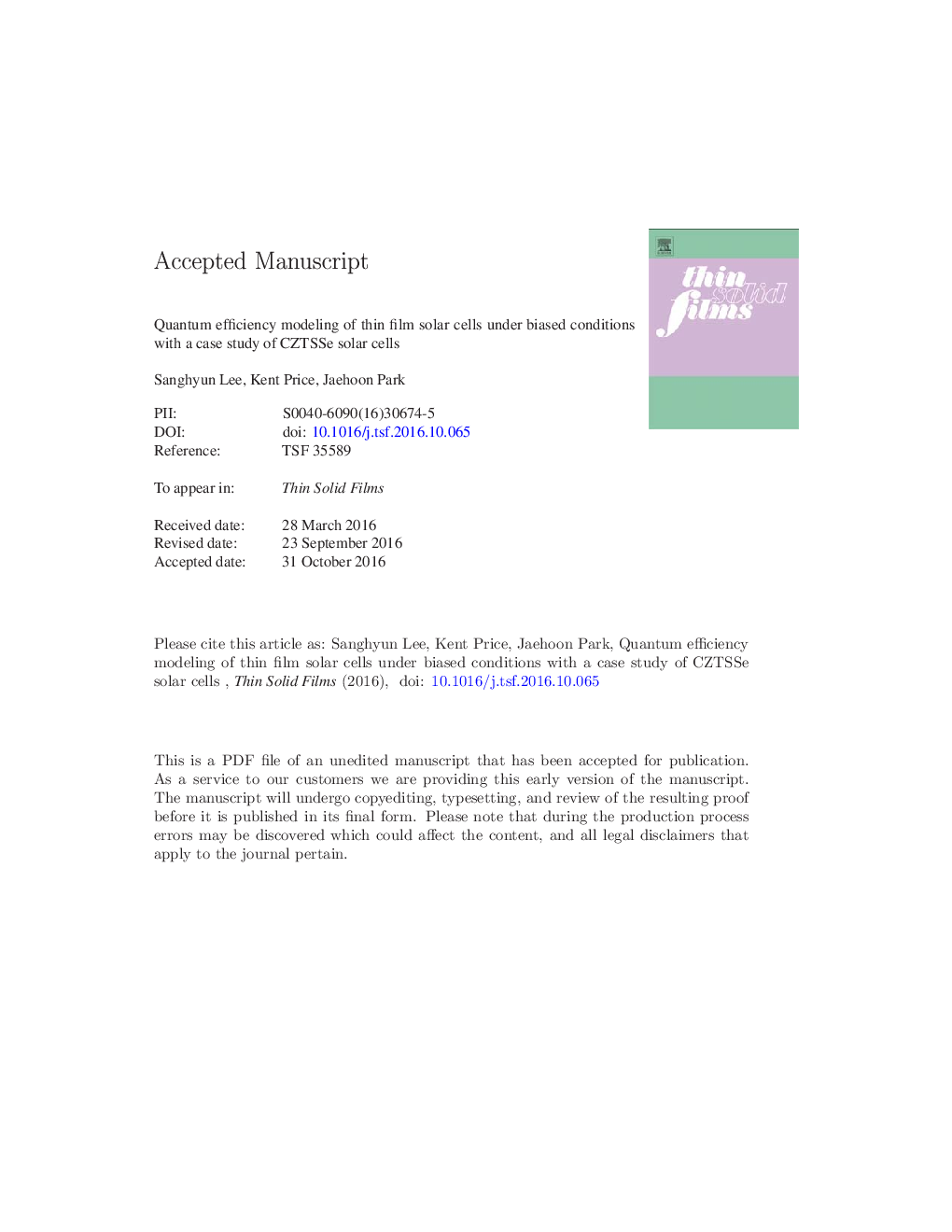| Article ID | Journal | Published Year | Pages | File Type |
|---|---|---|---|---|
| 5466501 | Thin Solid Films | 2016 | 10 Pages |
Abstract
We have modeled the quantum efficiency of thin film solar cell devices with a case study of kesterite solar cells under a set of biased conditions with SCAPS device simulator. This study reveals that the carrier collection with deep acceptor type defect distribution above and below 0.3eV from the midgap near the heterojunction interface is pronounced at particular wavelength regions, (500-550nm) at particular biased conditions, (0.2-0.25V). Specifically, these acceptor type defect states influence kesterite spectral responses of red and infrared light wavelength regions in quantum efficiency caused by affected space charge region width toward the back contact. As a result, the intensified drop of quantum efficiency occurs at ¿550nm at forward bias (0.25V) with a peak spectral response near 520nm to 530nm. This numerical model elucidates the probable loss mechanism to account for a deficit in open circuit voltage by taking into account of voltage and light bias models.
Related Topics
Physical Sciences and Engineering
Materials Science
Nanotechnology
Authors
Sanghyun Lee, Kent Price, Jaehoon Park,
